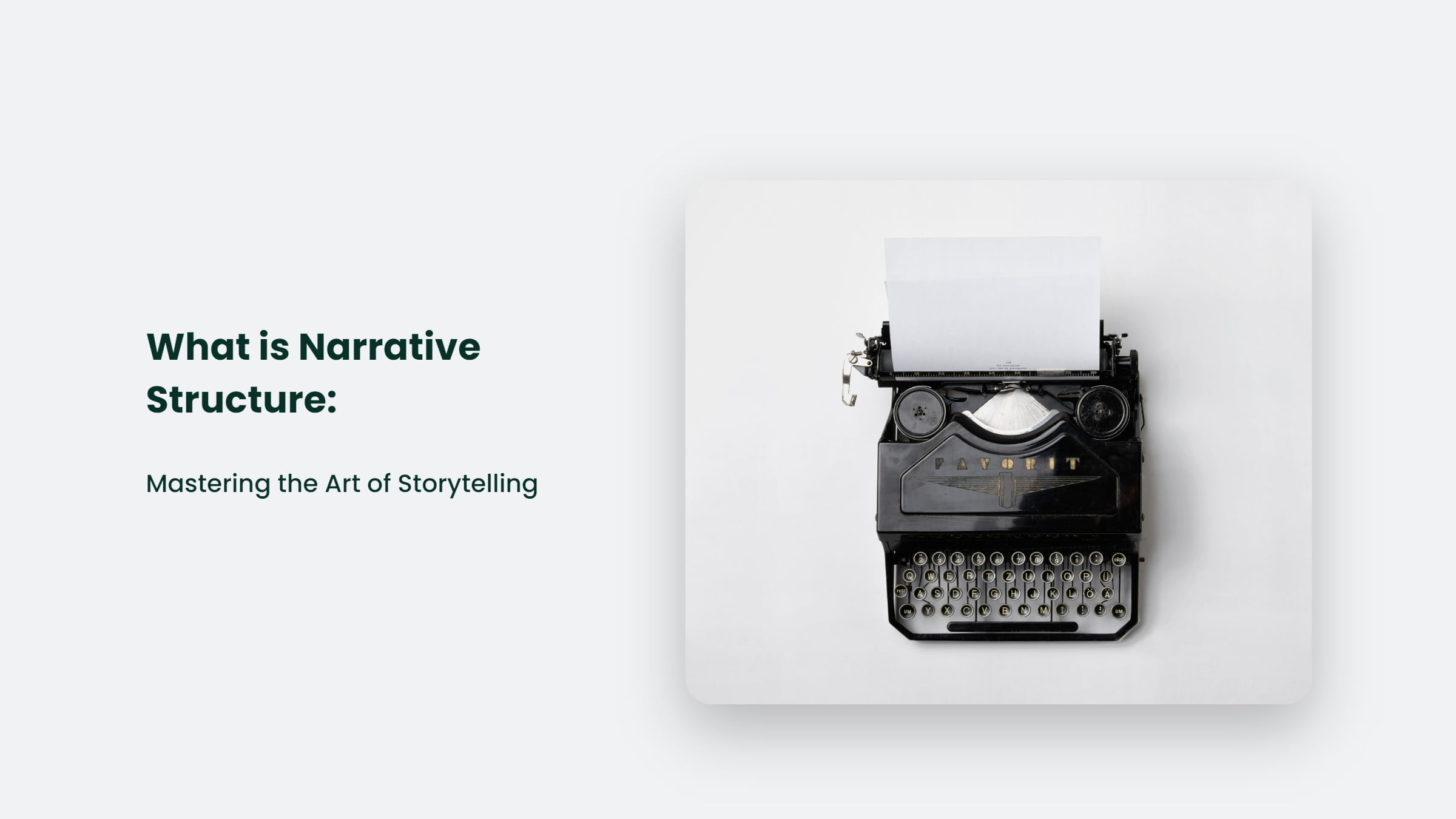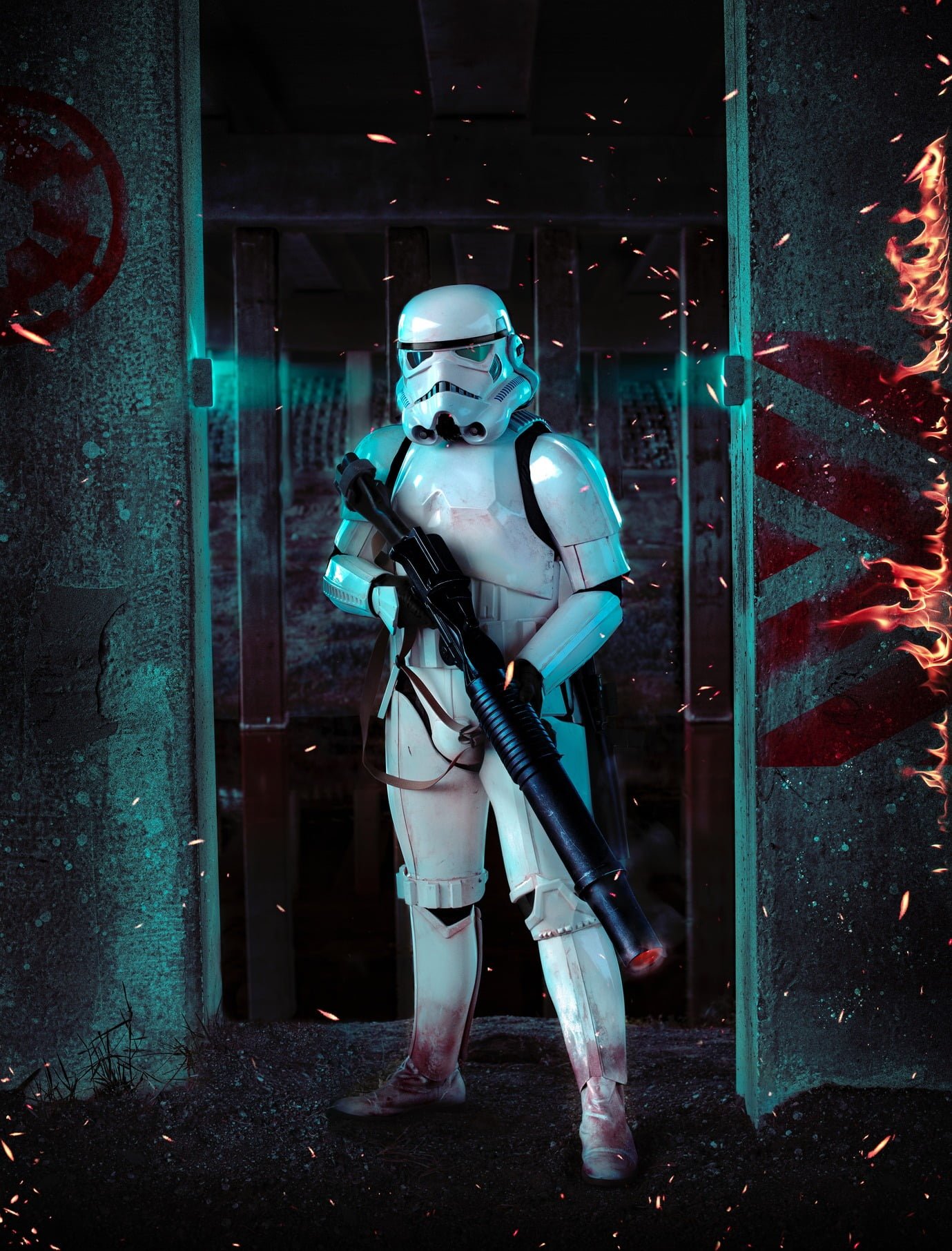

What is Narrative Structure: Mastering the Art of Storytelling in 2023

As Seen On
We all know the power of a good story – it can transport us to different worlds, evoke emotions, and leave a lasting impact. But what makes a story truly captivating? The answer lies in narrative structure. In this blog post, we’ll delve into what is narrative structure and how to use it to create stories that are engaging and impactful.

What is Narrative Structure?
The narrative structure is the framework that shapes a story and gives it direction. It’s the backbone of any written piece, whether it’s a novel, short story, or even a blog post. The understanding narrative structure is essential for any writer looking to create clear and compelling plots that will keep their readers hooked from beginning to end.
The most popular types of narrative structure include The Three Act Structures, Seven-Point Story Structure and Hero’s Journey.
The Three-Act Structure:
The three-act structure is one of the most popular and widely used narrative structures. This structure is divided into three parts: the setup, the confrontation, and the resolution.
The Setup:
The setup, also known as the exposition, introduces the story’s characters, setting, and conflict. It’s where the reader gets to know the main characters, their motivations, and the problem they will have to overcome.
The Confrontation:
The story’s most exciting and suspenseful part is where the plot thickens, and the stakes are raised. The confrontation is where the main conflict of the story takes place. It’s where the characters are tested and must make difficult decisions.
The Resolution:
The resolution is the final act, where the conflict is resolved, and the story ends. It’s where the characters find a solution to their problem, and the story reaches its climax.
Examples: Die Hard
The Seven-Point Story Structure
The Seven-Point Story Structure is another popular narrative structure used in screenwriting and storytelling. It consists of seven key elements that help shape a story and give it direction:
Hook:
A captivating opening scene grabs the reader’s attention and sets the tone for the rest of the story.
Plot Turn 1:
The first major plot twist that turns the story in a new direction.
Pinch 1:
A moment of high tension or conflict that raises the stakes and keeps the reader engaged.
Midpoint:
The story’s midpoint is where the protagonist’s journey takes a significant turn, and their goal becomes clearer.
Pinch 2:
Another moment of high tension or conflict adds more obstacles for the protagonist to overcome.
Plot Turn 2:
The second major plot twist sets up the climax of the story.
Resolution:
The story’s resolution is when the protagonist overcomes the final obstacles and reaches their goal.
The Hero’s Journey:
The Hero’s Journey is a narrative structure that outlines the protagonist’s journey (the hero) in a story. Mythologist Joseph Campbell popularized it in his book “The Hero with a Thousand Faces”. The Hero’s Journey is a universal structure found in many myths, legends, and famous stories across cultures and periods.
The Hero’s Journey consists of several stages, including:
The Call to Adventure:
The hero/main character is called to embark on a journey, often by a mentor figure or supernatural being.
Refusal of the Call:
The hero/ main character initially refuses the call, often due to fear or a sense of comfort in their current life.
Meeting the Mentor:
The hero meets a mentor who provides guidance and advice.
Crossing the Threshold:
The hero leaves their comfort zone and embarks on the journey.
Tests, Allies, and Enemies:
The hero faces trials and tribulations, makes allies and enemies along the way, and learns valuable lessons.
Approach to the Inmost Cave:
The hero reaches the climax of their journey, often facing a formidable enemy or challenge.
The Return:
The hero returns home, often with newfound wisdom or transformed in some way, and often brings that newfound knowledge or power back to their community.
The Hero’s Journey provides a clear structure for storytelling and can help writers create a compelling narrative that takes their hero on a transformative journey. It is also a popular structure in Hollywood, with many films and screenplays following this structure. Examples Include Star Wars, Indian Jones etc.

It is important to note that all these types of narrative structure play a crucial part in the protagonist’s character development.
The Importance of the Plot:
Another crucial element of narrative structure is the plot. A plot is the series of events that make up a story, and it’s what drives the narrative forward. A strong plot should be well-defined and easy to follow, with a clear beginning, middle, and end. The plot should also have a clear progression of events, with each event leading to the next in a logical and meaningful way.
Plot Structure:
Plot structure refers to the framework that a story follows to build up to its climax and resolution. It is the arrangement of events, characters, and settings that make up a story and determine its progression.
There are several different plot structures that writers use, including the three-act structure, the hero’s journey, and the seven-point story structure. The choice of plot structure can significantly impact a story’s tone, pacing, and overall impact. It is important for writers to carefully consider the type of plot structure that best fits their story and its goals.
Elements of Plot Structure:
The five elements of plot structure are:
- Exposition: The introduction of the story’s characters, setting, and conflict.
- Rising Action: The series of events that lead up to the climax, including conflicts, obstacles, and tension.
- Climax: The high point of the story where the conflict reaches its peak, and the protagonist must take action to resolve it.
- Falling Action: The events occurring after the climax lead to the resolution.
- Resolution: The final outcome of the story is when the conflict is resolved, and the story comes to a close.
The Role of Point of View:
Point of view is also an essential element of narrative structure. It refers to the perspective from which the story is told. The most common point of view is third-person, where the narrator is not a character in the story but an observer.
However, the story can also be told from a first-person perspective, where the narrator is also one of the characters in the story. Choosing the right point of view can greatly impact the reader’s perception of the story, characters, and plot.
Tips for Making Your Story More Engaging and Impactful:

- Start with a Hook: Begin your story with a captivating opening scene that will grab your reader’s attention and keep them interested.
- Create Memorable Characters: Your characters are the heart and soul of your story, so make sure they are unique, relatable, and memorable.
- Build Tension: Tension is what keeps your reader engaged. Ensure your story has plenty of twists, turns, and surprises to keep the tension high.
- End with a Bang: The climax of your story is where all the tension and conflict come to a head. Make sure it’s a memorable and impactful moment that will leave a lasting impression on your reader.
- Use the Right Point of View: Choose the right point of view to give your story the right tone and emotional impact.
Conclusion:
In conclusion, the understanding narrative structure is key for any writer looking to create engaging and impactful stories. By following a clear structure and incorporating these elements, you’ll be able to craft a well-defined plot, develop memorable characters, use point of view effectively, and take your readers on an unforgettable journey.
Whether you’re writing a novel, short story, or blog post, knowing the power of narrative structure will give you the tools to bring your story to life and leave a lasting impact on your audience. So next time you write, keep the plot structures, plot progression, and point of view in mind, and watch as your story comes to life in a captivating and impactful way!
Casey Jones
Up until working with Casey, we had only had poor to mediocre experiences outsourcing work to agencies. Casey & the team at CJ&CO are the exception to the rule.
Communication was beyond great, his understanding of our vision was phenomenal, and instead of needing babysitting like the other agencies we worked with, he was not only completely dependable but also gave us sound suggestions on how to get better results, at the risk of us not needing him for the initial job we requested (absolute gem).
This has truly been the first time we worked with someone outside of our business that quickly grasped our vision, and that I could completely forget about and would still deliver above expectations.
I honestly can't wait to work in many more projects together!
Disclaimer
*The information this blog provides is for general informational purposes only and is not intended as financial or professional advice. The information may not reflect current developments and may be changed or updated without notice. Any opinions expressed on this blog are the author’s own and do not necessarily reflect the views of the author’s employer or any other organization. You should not act or rely on any information contained in this blog without first seeking the advice of a professional. No representation or warranty, express or implied, is made as to the accuracy or completeness of the information contained in this blog. The author and affiliated parties assume no liability for any errors or omissions.

